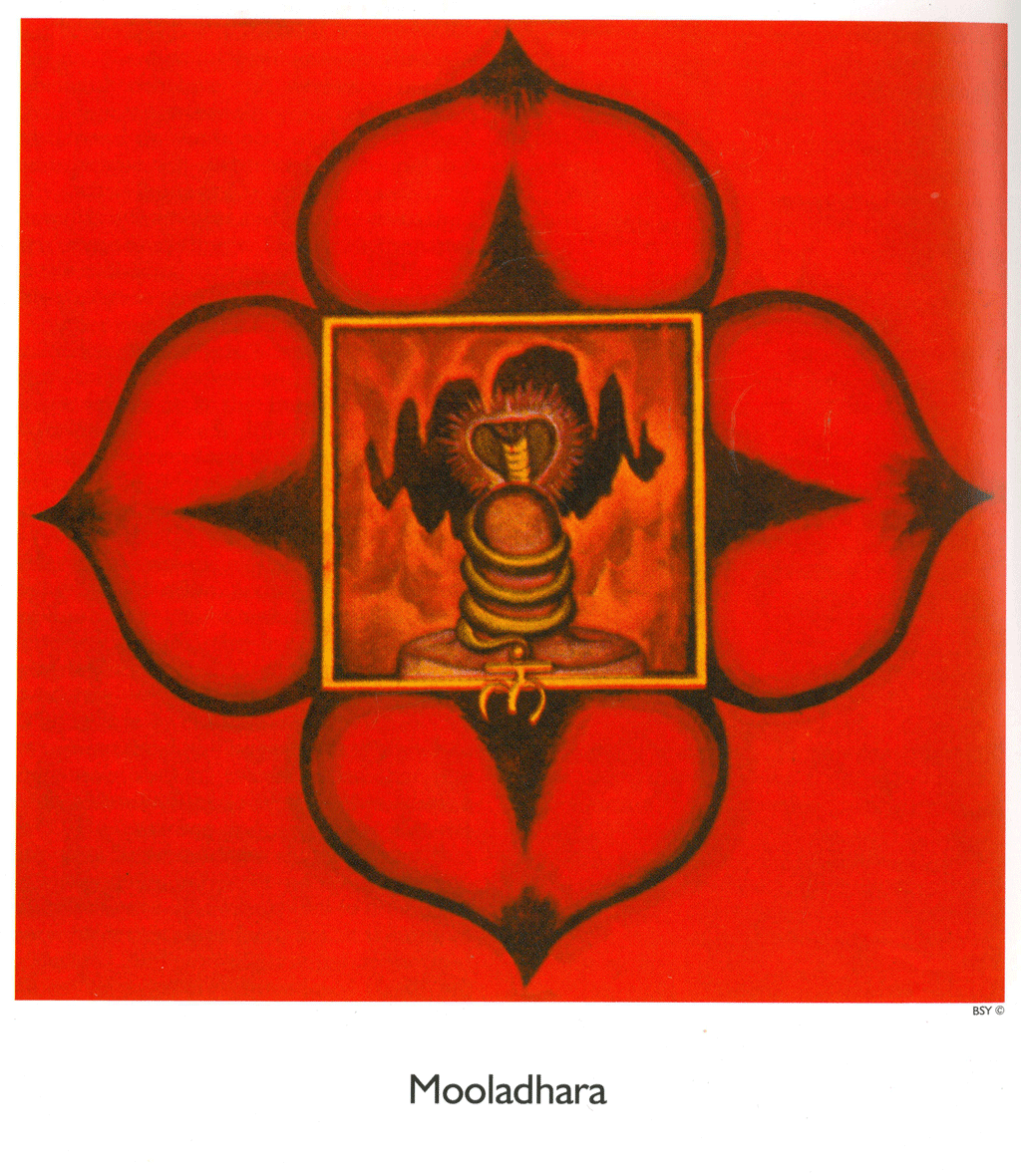Do you feel as though the chakras are a bit of a mystery — or perhaps too ‘out there’ to be relevant to you? Don’t write them off just yet.
When you spend a little time getting to know what the chakras really are, they actually become an incredibly useful way of thinking about your energy and your body. Crucially, you discover how a deeper understanding of chakras can, in turn, help you deepen your yoga and meditation practice and enhance your wellbeing.
The chakras are seven energy centres located at different points through the body; they radiate, receive and direct energy through all of the nadis, or energy channels.
Although mooladhara is the first chakra, it’s important to note that if you're just starting to incorporate chakra work into your practice, you should begin with Ajna — the sixth chakra. This will allow you to develop your ability to witness, observe and process any intense emotions that might arise before you start creating profound shifts with the other chakras.
Below, you’ll find a brief introduction to the 7 chakras. Over the coming months I will publish a more in-depth blog post about each chakra individually, and this post will become an index from which you can access all of that fabulous and life-enhancing information.
So, bookmark this post and come back to it — it’s going to get more valuable over time!
The Chakras
Mooladhara — the Root Chakra
Located at the perineum for men and cervix for women, Mooladhara is associated with security, money, possessions and reproduction, and its element is Earth. Its colour is red, with 4 petals.
This chakra radiates physical strength and stability. It gives us a sense of being grounded on the earth, confident and steady, and motivated to survive.
Emotionally, a balanced root chakra allows you to feel confident and enthusiastic; and working with mooladhara invites deeper calm, greater strength, and more stability.
Swadhisthana — the Sacral Chakra
Located in the coccyx (the tailbone), this chakra is associated with joy, sexuality and pleasure. It is related to the water element — with flow and flexibility. Its colour is orange, with 6 petals.
Swadhisthana means ‘dwelling place of the self’, and when exploring and directing energy flow through this chakra you may feel enlightened and blissful. It is associated with the sense of taste, and with the tongue, and regulates and purifies bodily fluids.
Working with this chakra improves our close personal relationships and sexual relationships. It is a feminine energy which, in its undisturbed state, is joyful, expressive and creative.
Swadhisthana allows us to move forwards with acceptance; with a recognition of how our history has affected the way we exist in the world.
Manipura — the Naval Chakra
Manipura’s element is fire. Located in the spine behind the naval, it is associated with power, self-esteem and action. Its colour is yellow, with 10 petals.
This chakra is closely related with our digestive fire, agni, and it governs our metabolism and digestion as well as other internal bodily systems; and it distributes prana around the body. The energy created by manipura allows us to feel a sense of purpose and create plans — and this in turn forms the basis for high self-esteem. Its detoxifying and transformative qualities apply to the mind as well as to the physical systems of the body, and a healthy manipura chakra allows us to feel warm towards others and experience clarity, rather than clouded emotions.
Anahata — the Heart Chakra
Anahata is located in the spinal area, in the region of the heart and cardiac plexus, behind the sternum and level with the heart centre.
It is associated with the Air element, and with deep love and compassion. Its colour is sky blue, with 12 petals.
Anahata is associated with the sense of touch and with the skin, as well as the heart and lungs. A clear anahata chakra allows us to be consciously aware and to feel a profound sense of security.
It's all about love and creativity. It allows us to give love freely, to feel love for ourselves, and to embrace the transient nature of the world without fear — and this makes space for powerful spiritual growth. Through anahata we discover that the only true teacher we need is within ourselves.
Vishuddhi — the Throat Chakra
Vishuddhi’s element is Space, or Ether. Located in the cervical plexus, at the back of the neck and level with the throat pit, Vishuddhi is associated with communication and purification. Its colour is violet, with 16 petals.
As well as the throat, this chakra is related to the ears, jaw, mouth and the thyroid gland. Enhanced capacity for clear and honest communication through working with vishuddhi gives us confidence, and a sense that we are worthy of being heard.
This chakra opens up the potential for deep and fulfilling emotional connections with others, and its relationship with the space element enables us to see the bigger picture, and understand that we are connected with everything and everyone. Vishuddhi forms the basis of Vijnanamaya kosha, which initiates psychic development
Ajna — the Third Eye Chakra
Ajna is located at the top of the spinal cord at the medulla oblongata (the brain stem), within the mid-brain, directly back from the eyebrow centre.
The closest translation of Ajna in English is ‘to know and command’. This chakra is associated with intuition, intellect, and higher powers. Its colour is silvery white, with 2 petals.
Ajna controls the pineal gland, which regulates all other glands throughout the body.
It is associated with an almost psychic intuition and makes us highly sensitive to what’s happening around us, and within us. It is strongly related to the central nervous system due to its location in the central brain close to the pineal gland. The pineal gland produces the hormone melatonin, that governs the sleep/wake cycle can protect against neuro-degeneration.
Working with ajna helps us to concentrate, focus, and release ourselves from negative thought patterns — and in turn, this means that we see things as they really are.
Sahasrara — the Crown Chakra
Sahasrara is the culmination of all the other 6 chakras. Actually, it’s not really a chakra at all — it has no specific form and instead is a source of energy that exists beyond us, in the universe. It’s in us too because we’re a part of that whole. Its colour is white, with the colours of all the other chakras woven throughout
This chakra is located above the crown of the head, in the subtle body rather than in the physical body. It is beyond the self. Beyond ego. It is pure and gives us an immense sense of freedom and joy.
Remember…
If you’re intrigued and would like to learn more about the chakras, bookmark this page! An in depth look at each chakra is coming soon.
PS: If you enjoyed this blog click the like button below then share it with those you care for who can also enjoy and benefit from it. 😊








